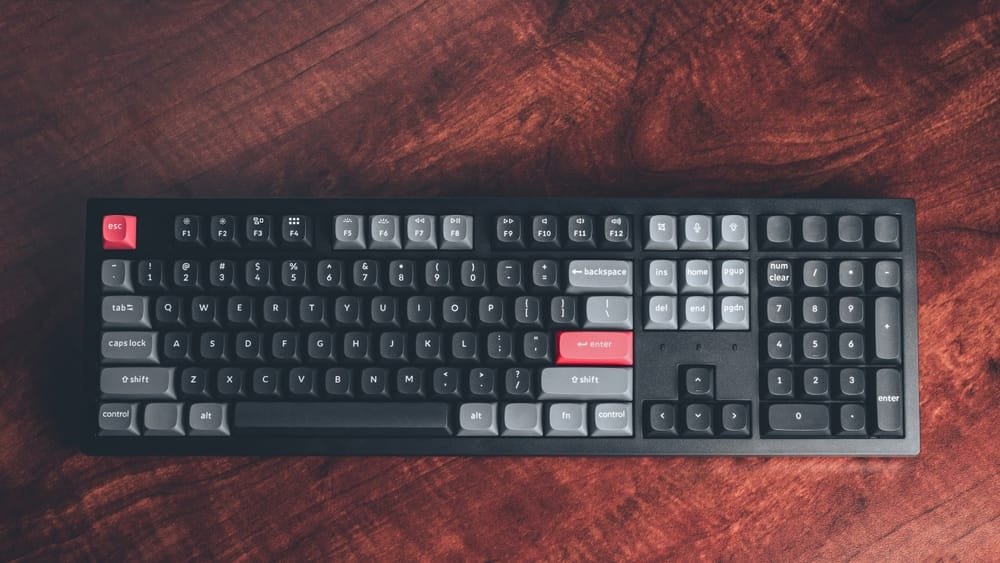The History of the QWERTY Keyboard: From Typewriters to Modern Computing
The QWERTY keyboard layout is one of the most widely used and recognized keyboard layouts in the world today. Its history dates back to the early days of typewriters and has continued to persist in the age of modern computers.
Let’s delve into the intriguing story of how this keyboard layout came to be and its impact on the world of typing.
The Inventor: Christopher Sholes
The QWERTY keyboard layout was invented by Christopher Sholes, an American inventor and newspaper editor.
In the late 1860s, Sholes, along with his colleagues Carlos Glidden and Samuel Soule, developed the first practical typewriter.
Sholes realized that the arrangement of keys needed to be carefully planned to prevent mechanical jams caused by fast typing.
The Typewriter and the Birth of QWERTY
Sholes’ typewriter featured a unique arrangement of keys that became the foundation for the QWERTY layout. The name “QWERTY” comes from the arrangement of the first six letters in the top row of the keyboard. This layout was specifically designed to reduce the likelihood of adjacent keys jamming by separating commonly used letters.
The Role of the Remington Company
The Remington Company, a leading manufacturer of sewing machines at the time, recognized the potential of the typewriter and saw an opportunity to expand its product line.
In 1873, Remington obtained the rights to manufacture and sell the Sholes-Glidden typewriter, which featured the QWERTY keyboard layout.
With Remington’s marketing efforts and distribution network, the QWERTY layout gained widespread recognition and popularity.
Controversies and Debates
Over the years, the QWERTY keyboard layout has faced its fair share of controversies and debates.
Some argue that the QWERTY layout is outdated and inefficient, claiming that alternative keyboard layouts such as Dvorak or Colemak offer better ergonomics and typing speed.
However, despite these debates, the QWERTY layout remains deeply ingrained in the typing habits of millions of people worldwide.
Transition to Modern Computing
With the advent of computers in the 20th century, the QWERTY keyboard layout seamlessly transitioned from typewriters to computer keyboards.
The familiarity and ubiquity of the QWERTY layout made it the natural choice for early computer manufacturers, solidifying its position as the standard keyboard layout.
The Enduring Legacy of QWERTY
Despite the emergence of alternative keyboard layouts, the QWERTY keyboard has stood the test of time. Its widespread adoption, familiarity, and compatibility with existing systems have contributed to its continued dominance.
Today, the QWERTY keyboard layout remains the default choice for most typists. Its history is a testament to the lasting impact of Christopher Sholes’ invention and the enduring design choices made in the early days of typewriters.
So, the next time you sit down to type, take a moment to appreciate the fascinating history behind the QWERTY keyboard layout—the layout that has shaped the way we communicate and interact with our digital world.
Conclusion
The journey of the QWERTY keyboard layout, from the early typewriters to the vast digital landscape of modern computing, is indeed a fascinating saga. While the layout was initially designed to solve a mechanical problem, it has become the universal standard, transcending languages and regions.
The debates and controversies surrounding its efficiency and ergonomics have neither diminished its relevance nor halted its usage. Despite the emergence of alternate layouts and advancements in technology, the QWERTY keyboard continues to be an essential part of our digital interactions.
Its persistence is a testament to its design, adaptability, and the influential role played by Christopher Sholes and the Remington Company. As users of this enduring legacy, we owe a part of our digital literacy and communication capabilities to the ingenuity encapsulated in the QWERTY keyboard layout.






